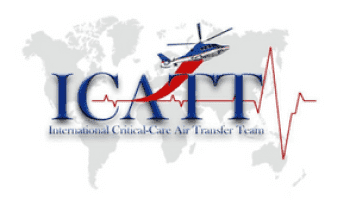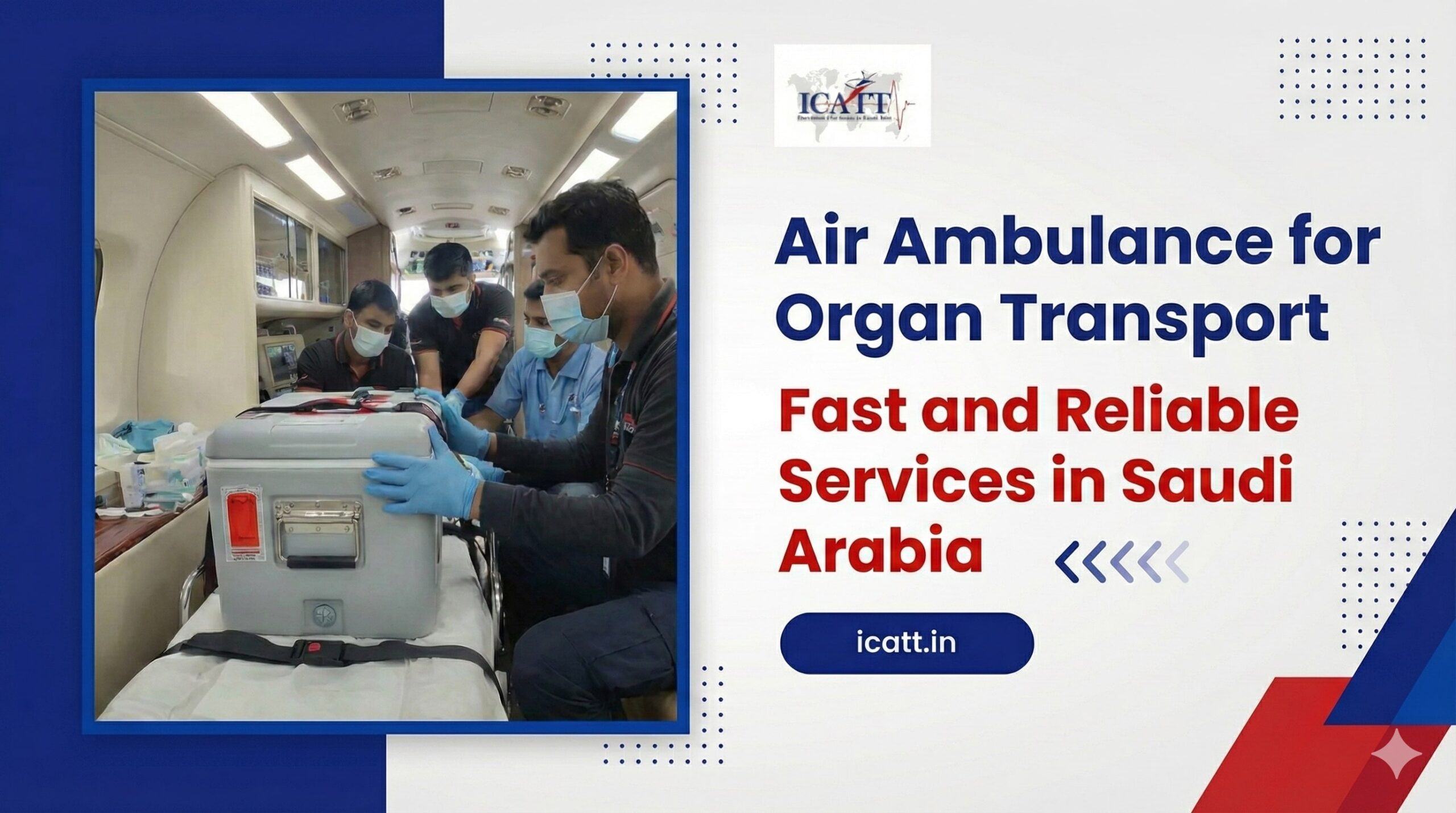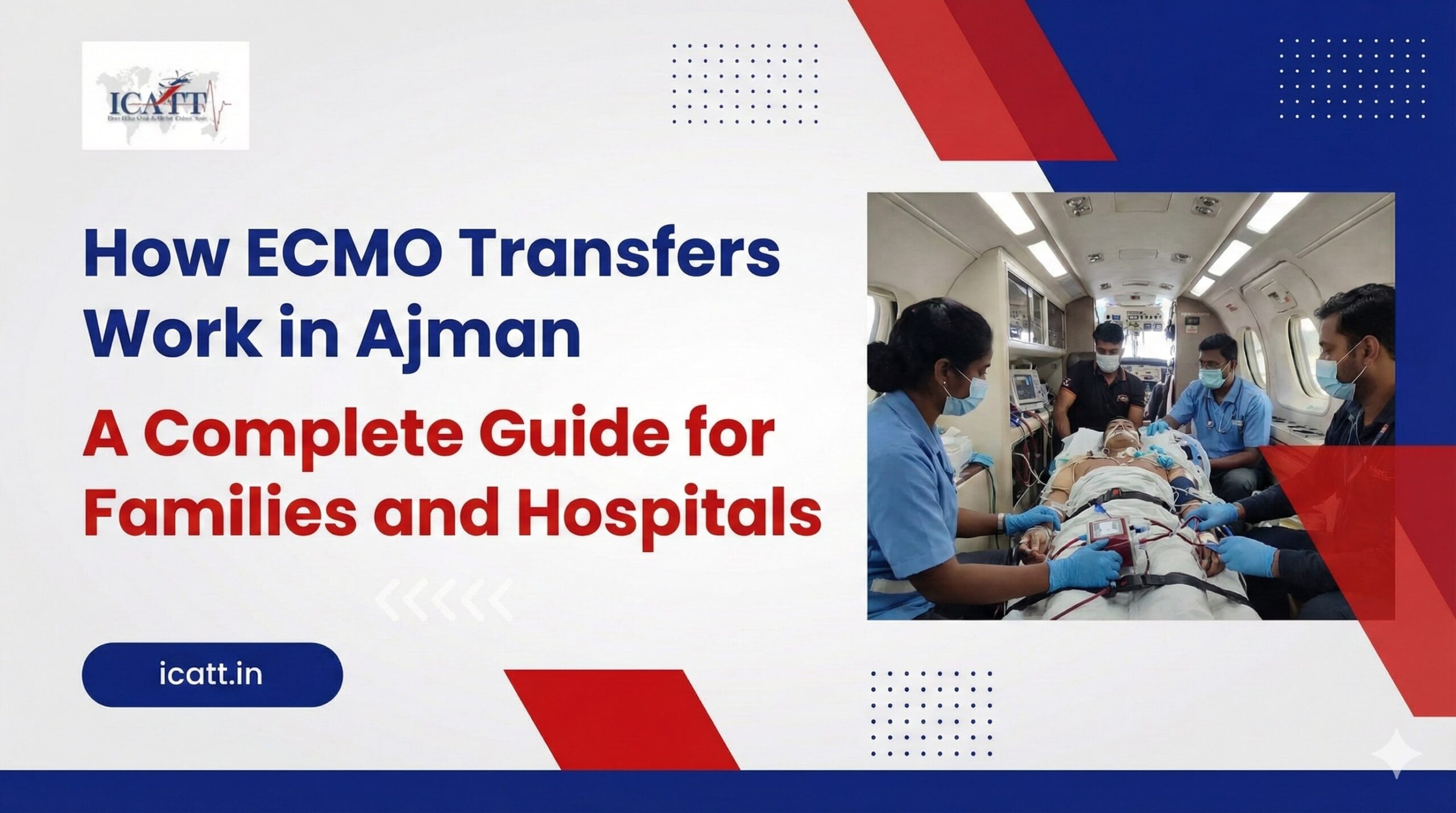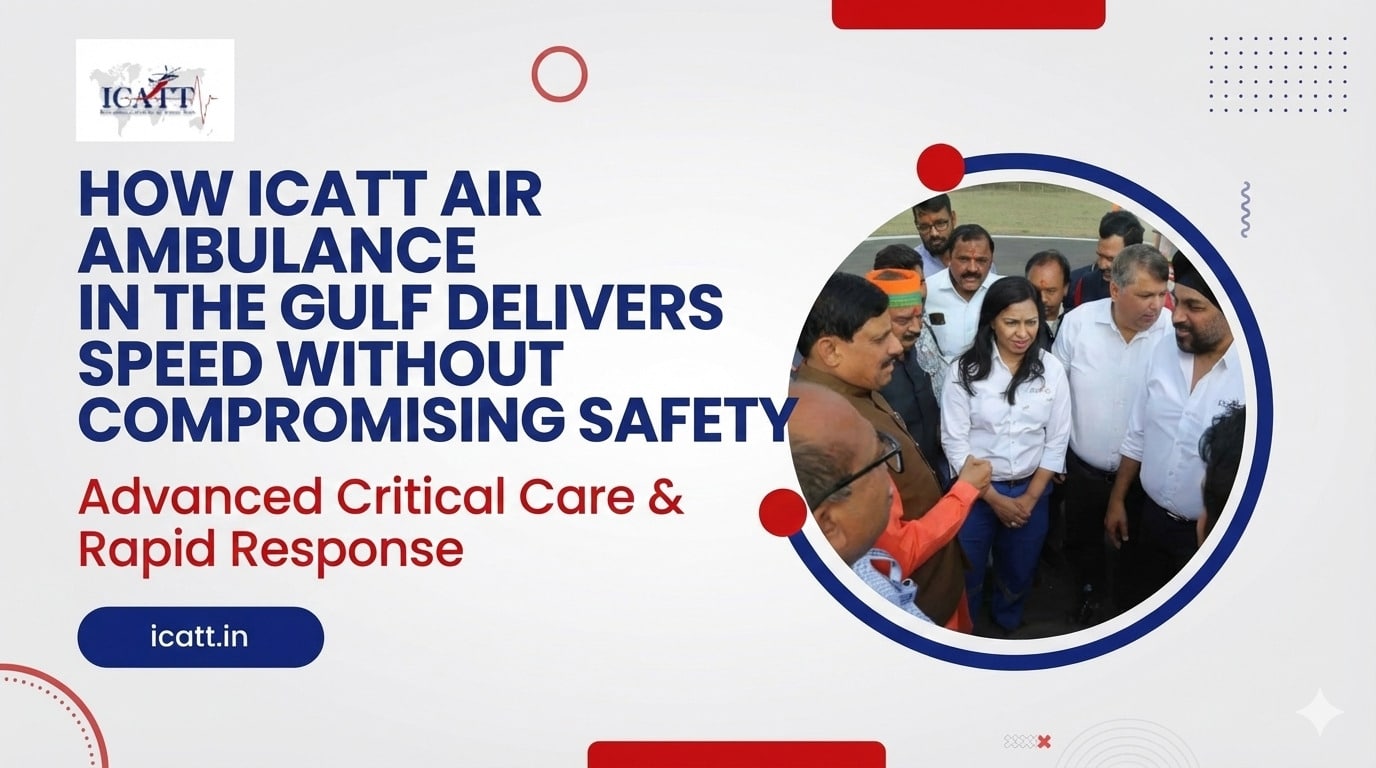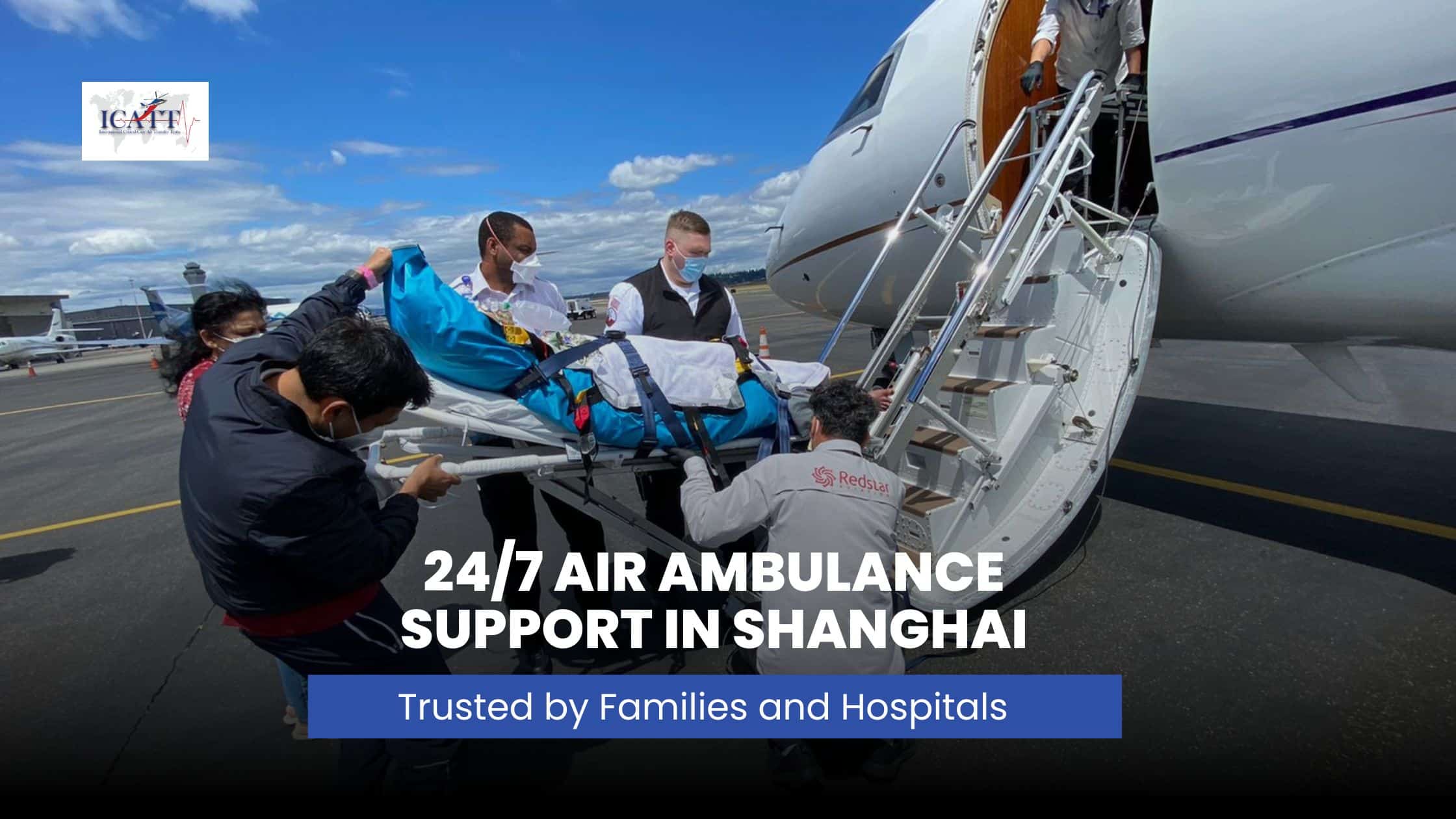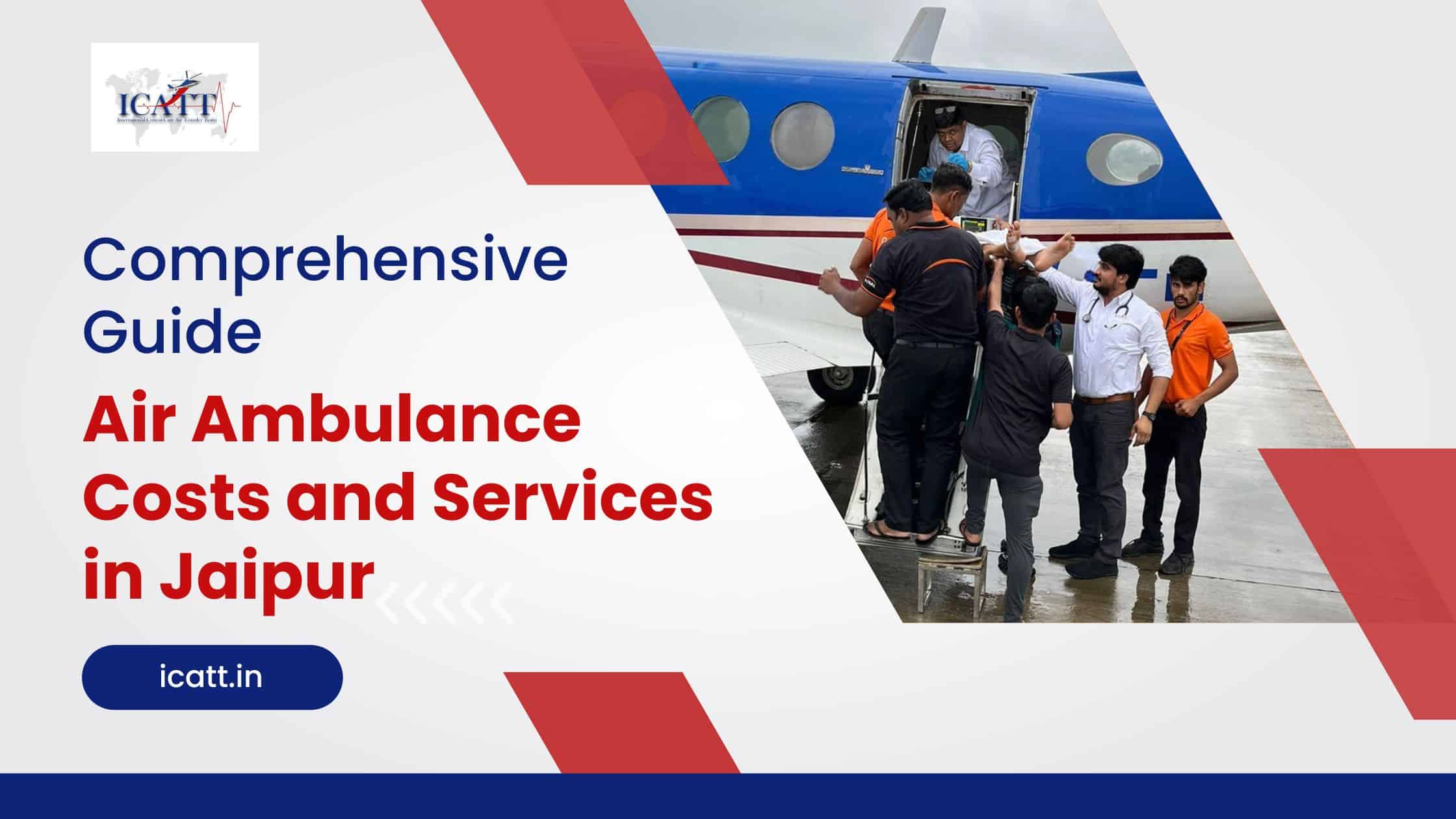Living in a country where facilities are available at our fingertips doesn’t mean emergencies come with a warning. We all know this truth: emergencies just come suddenly, often changing lives in a matter of minutes. Even the safest highways, the best cars, or the most advanced healthcare setups cannot guarantee that accidents won’t happen. And it’s not just accidents, but sometimes it’s a sudden heart attack at home or a critical injury on the road. In those frightening moments, the one question every family ask is, “How quickly can we get them to the right hospital?”
This is where the debate begins between an air ambulance in the USA and a ground ambulance. For decades, both have been lifesavers in different ways. Ground ambulances are the go-to emergency option, taking patients from homes, accident sites, or clinics to nearby hospitals. But what if the nearest hospital isn’t enough? That’s where air ambulances step in. Think of them as flying ICUs, which are equipped with advanced life-support systems, specialized medical teams, and enough space to handle critical care equipment while covering long distances or reaching areas where roads simply can’t.
But here’s the real question families ask: When to choose an air ambulance and when to stick with ground? This blog breaks down the facts in a simple way, helping you understand the difference between air and ground ambulance services and decide what’s right when every minute counts.
What is The Difference Between Air and Ground Ambulance Services?
Before making a decision, it’s important to first understand the difference between air and ground ambulance services. Both are designed to save lives, but the way they operate and when they are best suited can vary a lot.
Ground Ambulance: This is the most common form of emergency transport the USA depends on. These are road-based vehicles fitted with stretchers, oxygen supply, defibrillators, and trained paramedics who can stabilize a patient during transit. They are best for short to medium distances, especially within cities or towns where hospitals are nearby. For emergencies that don’t demand long-distance travel or extreme speed, ground ambulances are the first line of rescue.
Air Ambulance: An air ambulance USA is a specially designed aircraft (helicopter or fixed-wing plane) with ICU-level equipment such as ventilators, monitors, and life-support systems. The onboard crew includes specialized doctors and paramedics trained in critical care. These are best suited for long distances, rural or remote areas, cross-country transfers, and cases where every second matters. They are also used for international medical evacuation services, whether it’s transferring a patient to another country for advanced treatment or bringing them back home safely.
So, think of ground ambulances as everyday lifesavers, while air ambulances are the high-speed, high-tech rescue option for time-sensitive or complex emergencies. Both have their place, but knowing when to choose an air ambulance can make all the difference in survival and recovery.
Air Ambulance vs Ground Ambulance
| Aspect | Ground Ambulance | Air Ambulance |
| Mode of Transport | Road-based vehicles (van/ambulance) | Helicopter or fixed-wing aircraft |
| Distance Covered | Short to medium (within city/town, nearby hospitals) | Long distances, interstate, cross-country, or international transfers |
| Speed | Limited by road traffic, signals, and terrain | Extremely fast, bypasses traffic and covers long distances quickly |
| Medical Equipment | Basic to advanced (oxygen, defibrillator, stretchers) | ICU-level setup (ventilator, monitors, advanced life support) |
| Medical Crew | Trained paramedics or EMTs | Critical care doctors, nurses, and specialized paramedics |
| Best Suited For | Accidents, local emergencies, short-distance transfers | Polytrauma, cardiac arrest, stroke, brain injury, international evacuation |
| Accessibility | Works well in cities, suburbs, and semi-urban areas | Ideal for remote, rural, or disaster-hit areas where roads are blocked |
When to Choose Air Ambulance Services in the USA?
Every patient and every emergency are different. That’s why it’s important to know that not all cases can be managed by a ground ambulance. Sometimes, waiting for road transport can cost precious time. So, when to choose an air ambulance in the USA instead of relying on a ground ambulance? Here are the key situations:
- Long Distances Between Hospitals: If the nearest hospital doesn’t have the right facilities, like a trauma center, advanced cardiac care, or neurosurgery units, then distance becomes a challenge. In such cases, an air ambulance in the USA can cover hundreds of miles in far less time than a road ambulance. This ensures the patient reaches the right hospital quickly and gets timely, life-saving care.
- Remote or Rural Areas: Many places in the USA are either rural, mountainous, or not easily accessible by road. Traffic jams in big cities can also be a huge barrier. In these situations, flying over obstacles is the safest and fastest option. Air ambulances are equipped to land near difficult terrains, and as soon as the patient is on board, treatment starts immediately with the onboard medical team managing every step of care.
- Time-Critical Conditions: Certain emergencies don’t give much time. Conditions like severe heart attacks, strokes, major burns, or polytrauma injuries need urgent, specialized care within what doctors call the “golden hour.” In such cases, the question of when to choose an air ambulance has only one answer: when speed can save a life.
- International Transfers: Many patients in the USA live away from their hometowns or even need treatment abroad. Sometimes families prefer to bring their loved ones closer to home for specialized or family-supported care. In other cases, a patient might require advanced medical procedures available only overseas. In both scenarios, only an air ambulance in the USA can provide safe, ICU-level international medical evacuation, ensuring the patient is monitored and cared for throughout the journey.
Note: The rule is simple: if time, distance, or hospital access becomes a barrier to survival, that’s when to choose an air ambulance.
Why Choose ICATT Air Ambulance in the USA?
At ICATT, we don’t just provide transport; we provide lifesaving critical care in motion. What sets us apart is our commitment to making sure the patient receives the right care at the right time, no matter where they are.
ICATT is not just an air ambulance provider; we are a team of doctors, pilots, paramedics, and coordinators who work around the clock to make complex evacuations look seamless. Our focus is on fast response, safe transfer, and ICU-level treatment during the journey. Whether it’s a road accident, stroke, heart attack, or the need for international repatriation, ICATT ensures patients reach the most suitable medical facility without delays.
Unlike regular services, we bring hospital-level care to the skies. From bedside pickups to direct ICU handovers, we manage the entire chain of care so families can focus only on the patient while we take care of everything else. This reliability, trust, and expertise are why thousands of patients and families choose ICATT when emergencies leave no room for error.
What Facilities Are Available at ICATT?
At ICATT, we believe that emergencies don’t allow compromise, which is why our air ambulances are designed as flying ICUs. Here’s what makes our facilities stand out:
- Advanced Medical Equipment Onboard: Every ICATT aircraft is equipped with ventilators, cardiac monitors, infusion pumps, defibrillators, and emergency medications, ensuring critical patients are stabilized throughout the flight.
- Specialist Doctors & Paramedics: We have highly trained intensivists, emergency physicians, and paramedics who fly with the patient. This ensures that expert medical decisions are made instantly, not after reaching the hospital.
- Bed-to-Bed Transfers: ICATT manages the entire journey from patient pickup at home, accident site, or hospital bed to safe transfer and handover at the destination ICU.
- Emergency International Transfers: Whether within India or across borders, ICATT offers international air ambulance services for patients who need specialized treatment abroad.
- Custom Support for Every Case: For polytrauma patients, newborns, cardiac emergencies, and neurological cases, we customize the setup and team according to the patient’s exact condition.
- Ground Support Integration: Alongside the aircraft, ICATT provides advanced ground ambulances for airport-to-hospital transfers, ensuring the patient never experiences a gap in care.
- 24×7 Coordination Team: From medical clearances to hospital coordination, our backend team works tirelessly so the family doesn’t have to worry about logistics.
At ICATT, we don’t believe in just being fast, but we believe in being fast, safe, and medically reliable. That’s why hospitals, corporates, and families trust us when critical emergencies demand the best care in the shortest possible time.
Hence, emergencies test both time and patience. It’s not always easy to decide between an air ambulance and a ground ambulance in the USA, but understanding the basics makes it clearer. If the situation is local and stable and hospitals are close, ground transport works perfectly. But when to choose an air ambulance comes down to speed, distance, and critical care needs.
The difference between air and ground ambulance services is clear: one is the everyday hero, the other a specialized lifeline. Together, they form the backbone of emergency transport in the USA, ensuring patients get to the right place at the right time.
Therefore, what matters most is not the vehicle, but the life it saves. With trusted teams, advanced care, and the right decision at the right moment, both air and ground ambulances continue to turn near-tragedies into stories of survival.
